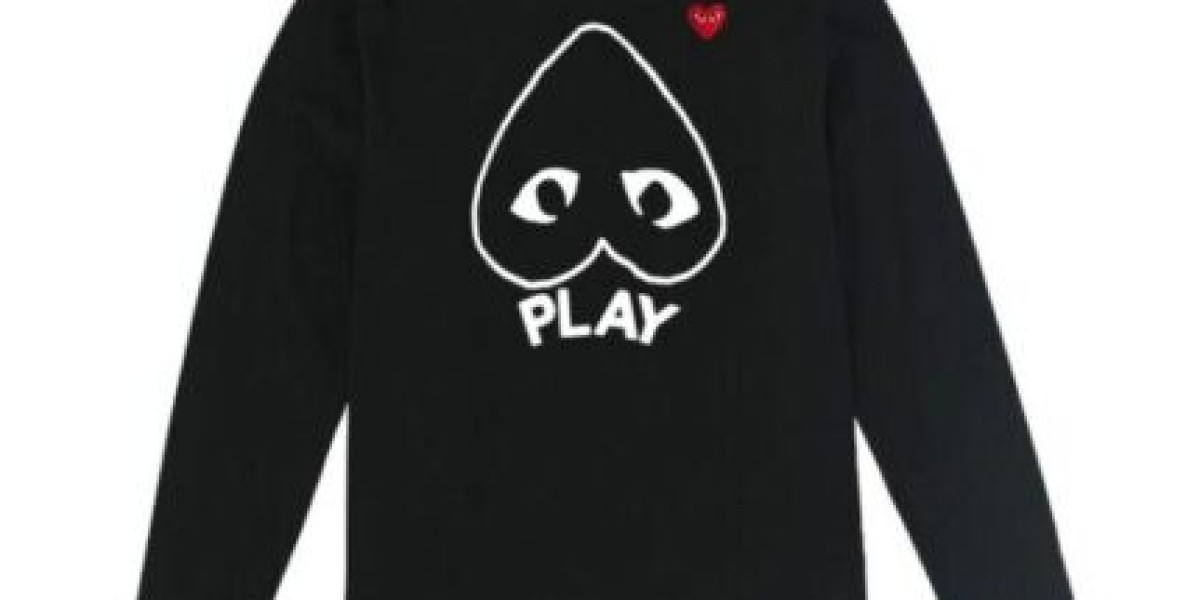In the ever-evolving world of fashion, few names resonate with as much avant-garde reverence as Comme des Garçons. The brainchild of Japanese designer Rei Kawakubo, the brand has carved out a unique, often surreal niche in global fashion. More than just a label, Comme des Garçons is a cultural force — a rebellion against norms, and a magnet for those who see fashion Comme Des Garcons as an art form, not just a product. But beyond its runway spectacles and architectural silhouettes lies a network of style icons who have helped define and expand the label’s mystique. These figures don't merely wear Comme des Garçons; they embody its philosophy.
The Visionary Behind the Curtain: Rei Kawakubo
Any journey into the world of Comme des Garçons must begin with Rei Kawakubo herself. Since founding the label in Tokyo in 1969, Kawakubo has redefined the very concept of fashion. Her work challenges the conventional boundaries of beauty, gender, and form. With collections that often appear more sculptural than wearable, she has elevated the runway into a stage of intellectual and emotional expression. Her refusal to explain her work has only added to its enigmatic power, allowing wearers and critics alike to project their interpretations.
For Kawakubo, clothing is not about making people look good; it's about provoking thought and emotion. This ethos attracts a particular type of fashion icon — those who are more interested in identity and storytelling than trend-chasing. It’s this alignment of vision that has made Comme des Garçons a beacon for artists, musicians, and actors who walk the line between subversion and sophistication.
The Avant-Garde Celebrities
When it comes to celebrities, Comme des Garçons doesn't cater to the usual Hollywood glamour. Instead, it draws in cultural outsiders and tastemakers. Take Björk, for instance, whose whimsical, futuristic aesthetic aligns seamlessly with the brand's ethos. She’s donned Comme des Garçons both onstage and on red carpets, making a statement that extends beyond fashion — one of independence, intellect, and imagination.
Tilda Swinton, another longstanding muse of the label, brings a similarly cerebral energy. Known for her androgynous style and unorthodox film roles, Swinton has often turned to Comme des Garçons for appearances that blur gender lines and artistic genres. Whether she’s walking a red carpet or sitting front row at Paris Fashion Week, she represents the perfect synergy of Kawakubo’s vision and real-world presence.
Even Kanye West, known for his own fashion ventures, has expressed admiration for Comme des Garçons. Though his style often veers into streetwear territory, his nods to the brand illustrate the breadth of its influence — reaching even into the hyper-commercial world of rap and fashion collaboration.
Street Style Icons and Subcultural Devotion
While celebrities help amplify the brand’s reach, the real heartbeat of Comme des Garçons lives in the streets. The brand enjoys cult status among fashion’s most committed insiders. In cities like Tokyo, London, and Paris, dedicated wearers treat Comme des Garçons not just as fashion but as identity. These are the street style icons whose wardrobes are built around the label's many sublines: Play, Homme Plus, Noir, and more.
In Tokyo’s Harajuku district, it’s not uncommon to see fashion-forward youth mixing Comme des Garçons pieces with vintage finds or DIY elements. This freestyle, experimental approach aligns with Kawakubo’s original punk spirit. In fact, streetwear and Comme des Garçons have enjoyed a long, if sometimes tense, relationship — culminating in limited-edition collaborations and hybrid collections that blur the line between couture and casual.
Parisian and London streetwear influencers, often with extensive knowledge of fashion history, treat Comme des Garçons garments like archival treasures. These pieces are not just clothes but cultural artifacts, imbued with meaning and marked by time. To wear Comme is to make a statement — not about wealth or status, but about intellect, creativity, and rebellion.
Fashion Editors and Industry Insiders
Inside the fashion industry itself, Comme des Garçons holds an almost sacred place. Editors, stylists, and buyers often regard Kawakubo as a philosopher of fabric. You’ll often see influential editors like Carine Roitfeld or Grace Coddington referencing or wearing pieces from past collections, using them as narrative devices in fashion editorials.
Anna Dello Russo, former Vogue Japan editor-at-large, has been spotted in bold Comme des Garçons silhouettes that defy traditional styling rules. Her fearless approach to fashion — part costume, part commentary — mirrors the brand’s disruptive intentions. Similarly, influential stylists use Comme pieces in magazine spreads not just for aesthetic appeal but to convey mood and provoke thought.
For these insiders, Comme des Garçons offers a playground of interpretation. The clothes may not always be “flattering” in a traditional sense, but they are intellectually rewarding, full of layers — both literal and metaphorical.
The Influence on Fashion at Large
Comme des Garçons has never played by the rules, but paradoxically, it has written the playbook for contemporary fashion rebellion. Designers from all over the world — from Vetements’ Demna to Hood By Air’s Shayne Oliver — cite Kawakubo as a primary influence. They are part of a lineage that doesn’t follow trends but questions their very existence.
What sets Comme des Garçons apart is its refusal to settle into predictability. Each season is a reinvention, a destruction of the previous form. This ethos has extended to Dover Street Market, the retail space Kawakubo co-founded, which showcases both her Comme Des Garcons Hoodie own lines and emerging designers. The store’s rotating installations and rejection of traditional merchandising underscore the brand’s commitment to evolution over repetition.
A Living Museum of the Unexpected
To understand the world of Comme des Garçons style icons is to understand a world where fashion is more than utility or ornament. It’s performance, resistance, and philosophy. From the rarefied air of high fashion editorials to the vibrancy of Tokyo’s backstreets, the brand operates like a living museum — constantly evolving, challenging, and inspiring.
The icons who wear Comme des Garçons aren’t just putting on clothes; they’re participating in a dialogue. They reject simplicity for complexity, surface for depth, ease for intrigue. In doing so, they transform themselves from consumers into collaborators, helping to shape a brand that refuses to be boxed in.
In a world where fast fashion reigns and style often succumbs to convenience, Comme des Garçons and its community of icons remind us that fashion can still be an intellectual pursuit. It can challenge assumptions, celebrate difference, and most importantly — express who we truly are, or who we dare to be.








